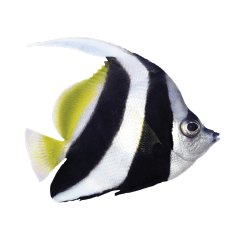News ·
Expanding our impact in the Whitsundays
A vital step in restoring a sanctuary for vulnerable and iconic marine species.
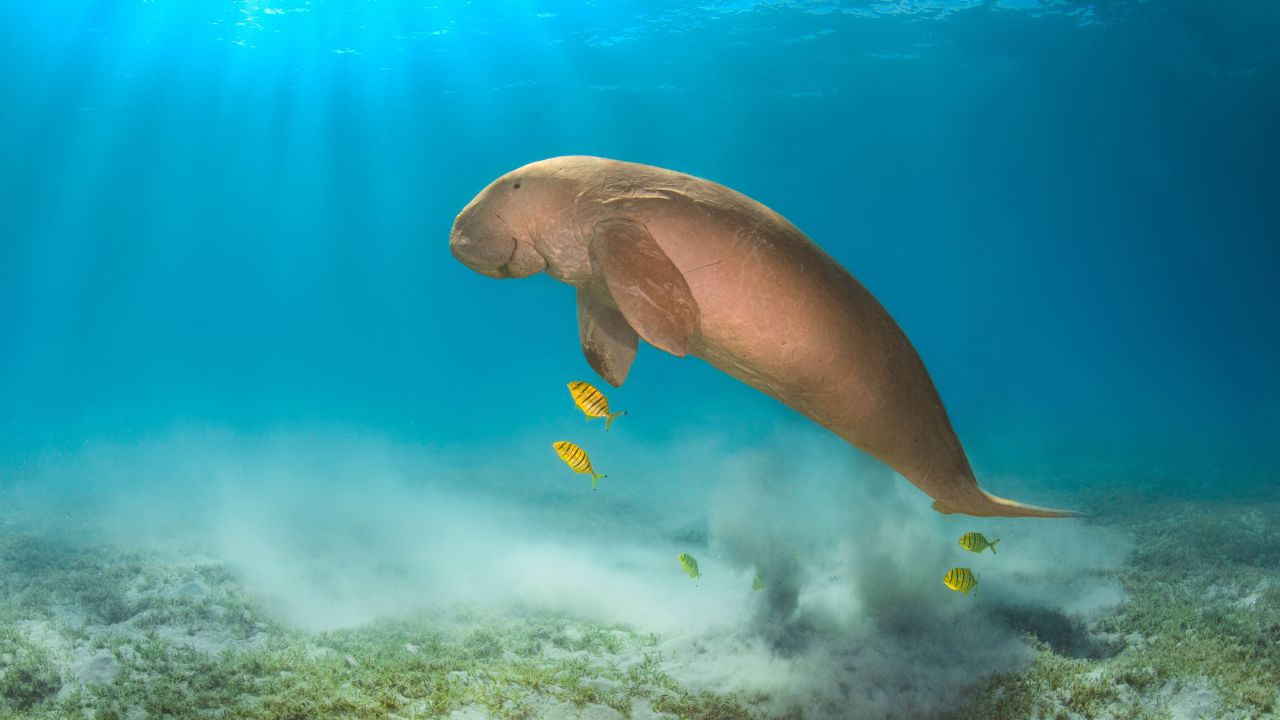
It’s not surprising that the Whitsunday islands are a global icon, attracting almost half of the annual tourism visitation to the Great Barrier Reef. Unparalleled in natural beauty and with more than 70 islands that are largely isolated, this region is a mecca for sailing, diving and snorkelling. But it’s not just tourists that flock to the Whitsundays.
The Whitsunday islands are a sanctuary for vulnerable species of the Great Barrier Reef and a migration path and birthing ground for whales, turtles and dugongs. Beneath the azure waters this region is known for, are the unsung heroes of this ocean habitat: seagrass meadows. The ongoing restoration of these meadows is crucial to the islands, connected reefs and supporting ecosystems as they harbour life, filter water and protect our coastlines.
Delivered through the Whitsundays Reef Islands Initiative, a new expanded seagrass nursery has been unveiled in Airlie Beach which will support the enhancement of degraded seagrass meadows, helping to build their resilience against the increasing impacts of climate change.
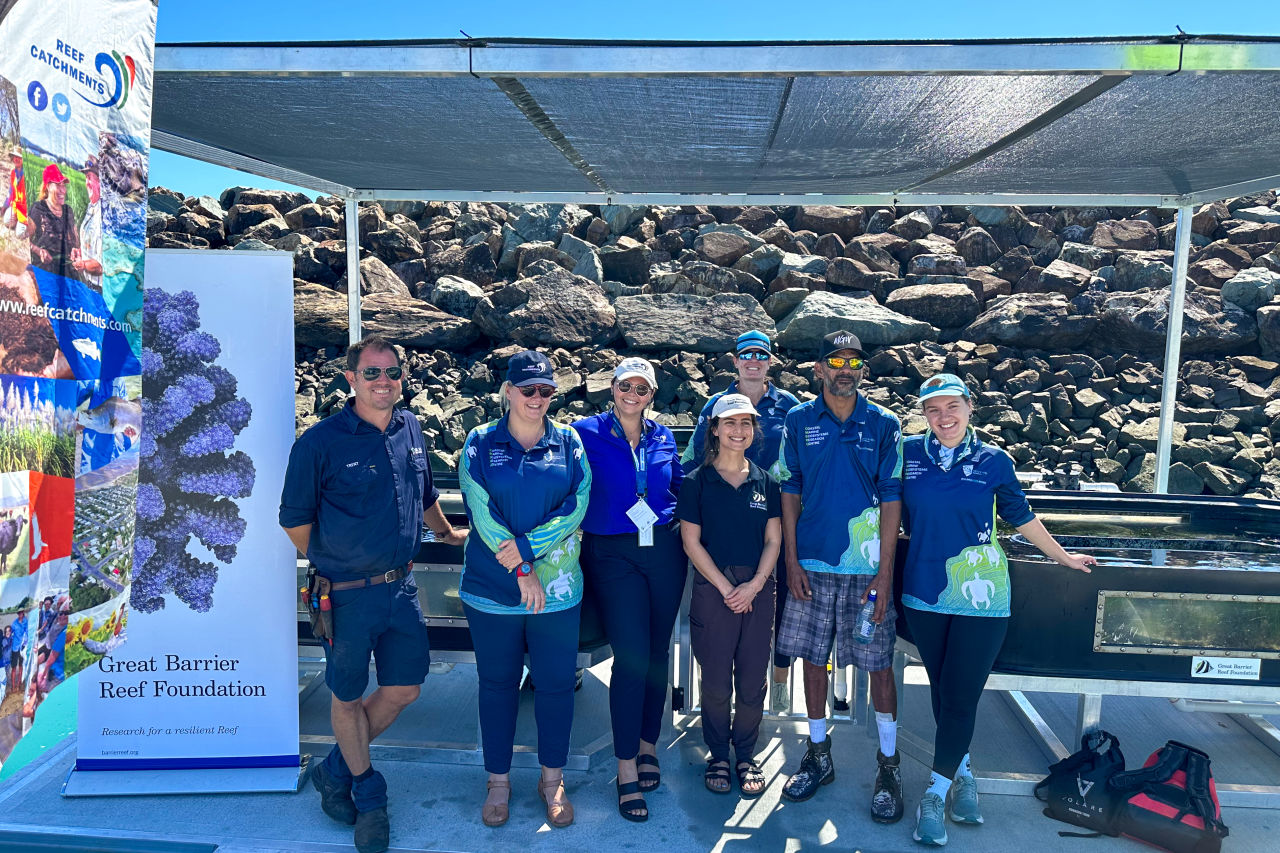
The new seagrass nursery is officially launched. Credit: Reef Catchments.
#Why is seagrass important?
Seagrasses are unique in that they represent the only flowering plants that can live entirely in the sea. Seagrasses are considered critical habitats that provide a long list of ecosystem services and benefits to humans. They are important nursery and foraging habitat for fish and shellfish. They cycle nutrients and oxygenate the water. They prevent coastal erosion and capture carbon. They have been shown to remove harmful pathogens, pollutants and microplastics from the waters that flow around them, keeping our coastal ecosystem healthy. They are also very important for dugong and turtle feeding grounds.
Seagrass restoration projects across the Great Barrier Reef are working to improve ocean health across the wider ecosystem while also helping the meadows recover from recurring major events like cyclones.
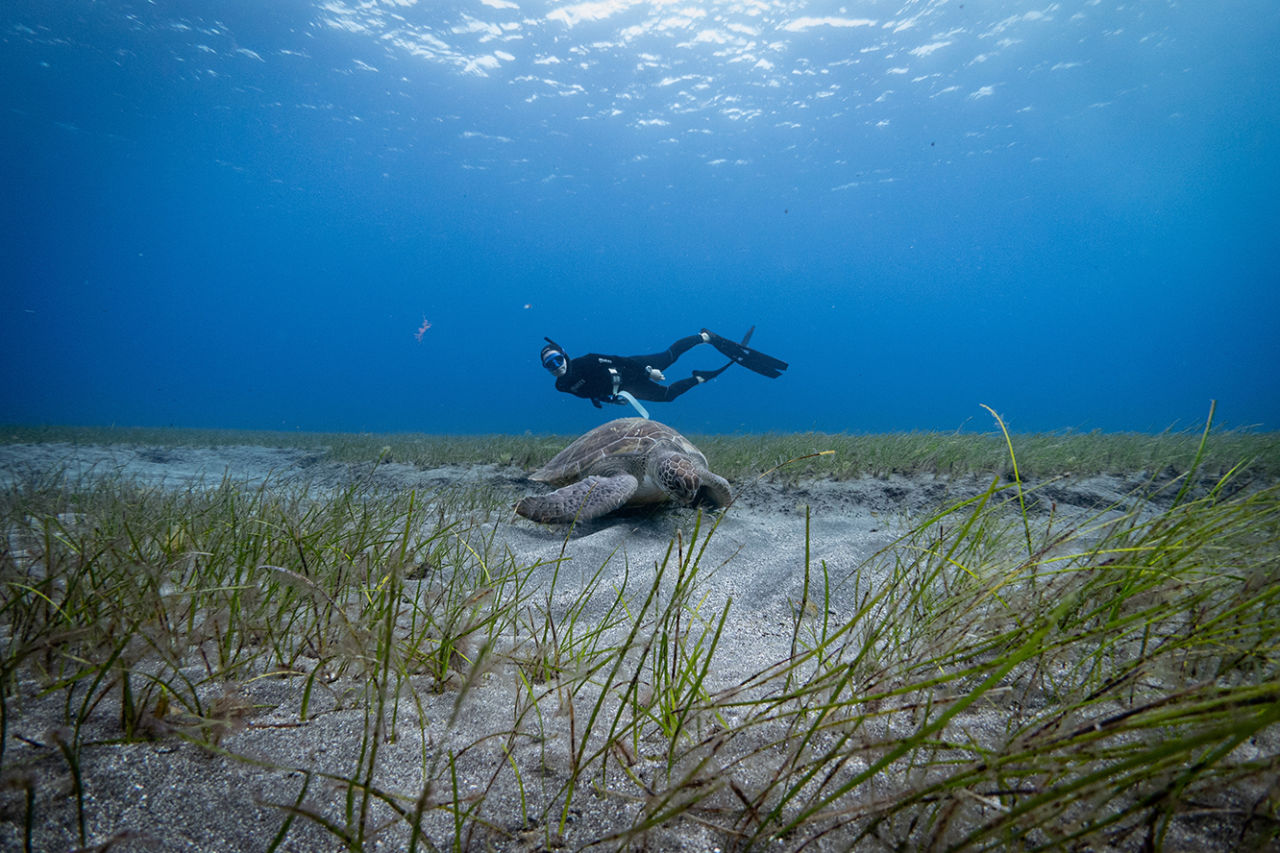
Seagrass meadows are important feeding grounds for turtles and dugongs.
#A success story for seagrass
Following the launch of the Reef Islands Initiative in the Whitsundays in early 2020, the Foundation worked closely with the local Reef community, including Ngaro Traditional Owners, Reef managers, and tourism operators, to establish a pilot seagrass nursery to support the restoration of local seagrass meadows. This nursery had great success and saw excellent growth that underpinned the Reef Islands Initiative’s ambition to upscale the nursery and to have greater impact across the Whitsundays.
In its infancy, the nursery was established by collecting local seagrass and their flowers from Pioneer Bay. The pilot nursery was working to grow a healthy stock of seagrass to produce a local seed bank without the need to rely on community flower collections. This bank will be used as a security measure to rehabilitate degraded pockets of seagrass in the event of a cyclone.
A prototype seagrass nursery designed for this program has been one of the most successful at growing seagrass across the Great Barrier Reef. This filtration system pumps in sea water, introducing small marine animals to the tank, while also allowing the water to circulate. Both the animals and the flow within the tank are believed to limit algae build up and promote better seagrass growth.
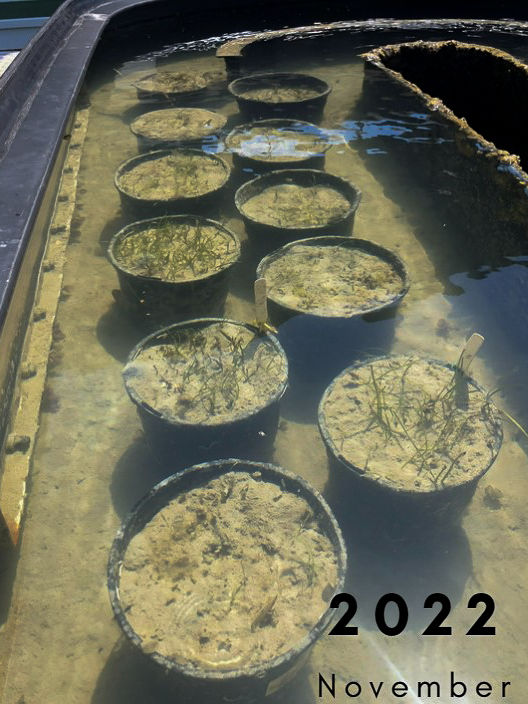
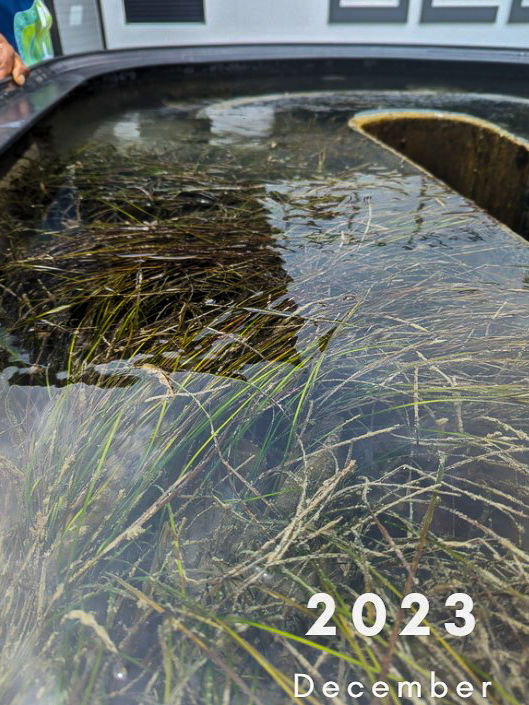
The nursery has had excellent growth since 2022. Credit: Cass Hayward – Reef Catchments.
#Upscaling seagrass restoration across the Whitsundays
The Great Barrier Reef Foundation has worked alongside Central Queensland University and Reef Catchments to upscale the Whitsundays seagrass nursery at Airlie Beach. This upgrade will triple the pilot nursery’s capacity and includes three seagrass tanks and two flower collection tanks to increase the number of plant stock, not just for Pioneer Bay but across the wider Whitsundays region. The upscaled nursery has been unveiled in time for the flowering season.
CQUniversity's Coastal Marine Ecosystem Research Centre (CMERC) Director Professor Emma Jackson,said the new expanded nursery which is part of CMERC would play a crucial role in seagrass restoration in the region.
“This upscaled initiative which is hosted by the Coral Sea Marina Resort in Airlie Beach builds upon the success of the pilot nursery, which demonstrated outstanding seagrass growth and serves as a model for other areas,” she said.
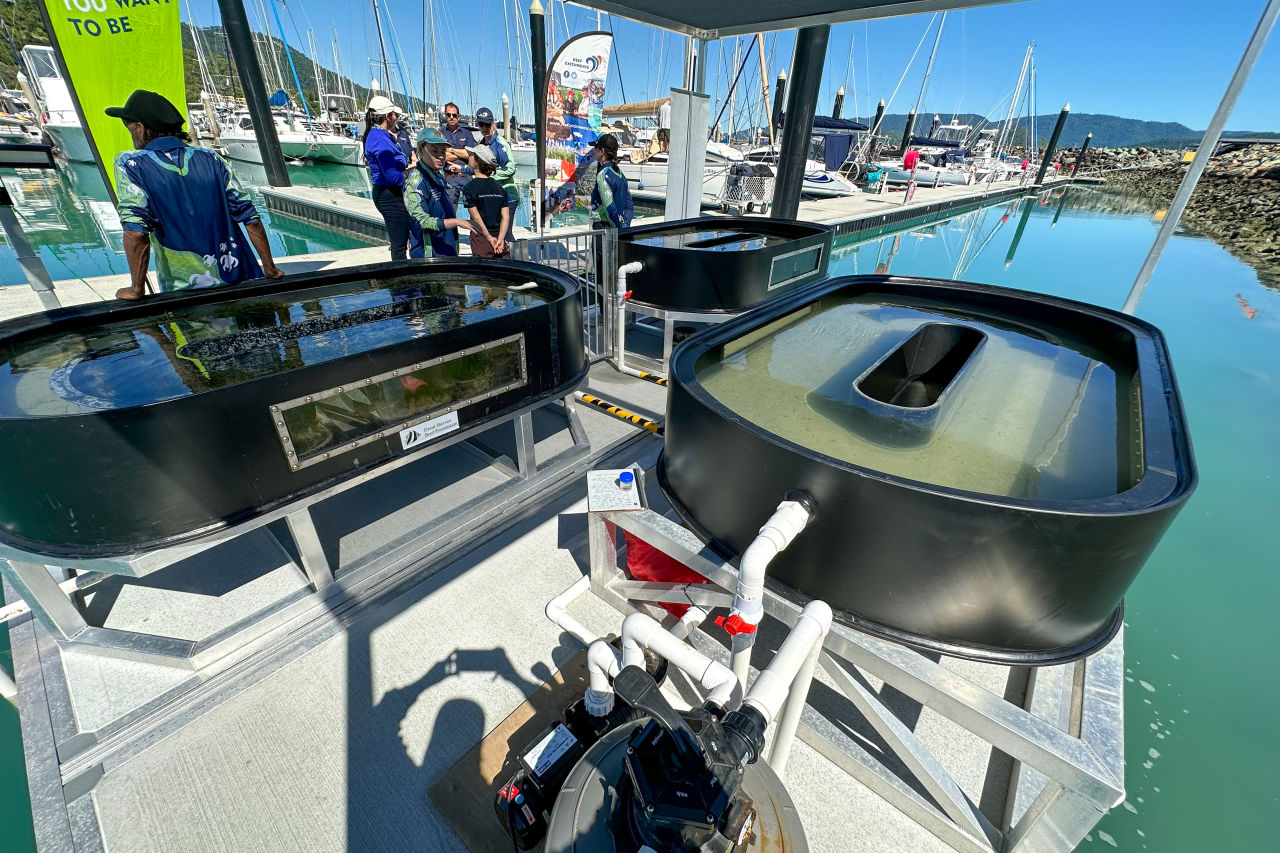
The current seagrass nursery will triple the nursery's capacity. Credit: Reef Catchments.
Great Barrier Reef Foundation’s Reef Islands Initiative Senior Program Manager Clarissa Elakis said the importance of seagrass to the Great Barrier Reef could not be overstated.
"As the climate continues to change, the Reef’s seagrass meadows are struggling to recover from increasingly severe and frequent cyclones like Cyclone Ului and Cyclone Debbie which severely impacted the region’s seagrass meadows in 2010 and 2017.
“The new expanded seagrass nursery will give local seagrass meadows an additional boost toward recovery.”
This project is working with Traditional Owners as custodians of Land and Sea Country to deliver restoration activities and build capacity. As part of the project, CQUniversity has employed two local Traditional Owners to maintain the nursery and safeguard the seagrass.
The nursery will become a long-term asset for ongoing Central Queensland University research, public education and fieldwork. The learnings from the pilot nursery design are now being applied to other Central Queensland University nursery systems. This is an exciting result and a testament to the collaborative efforts of the team.
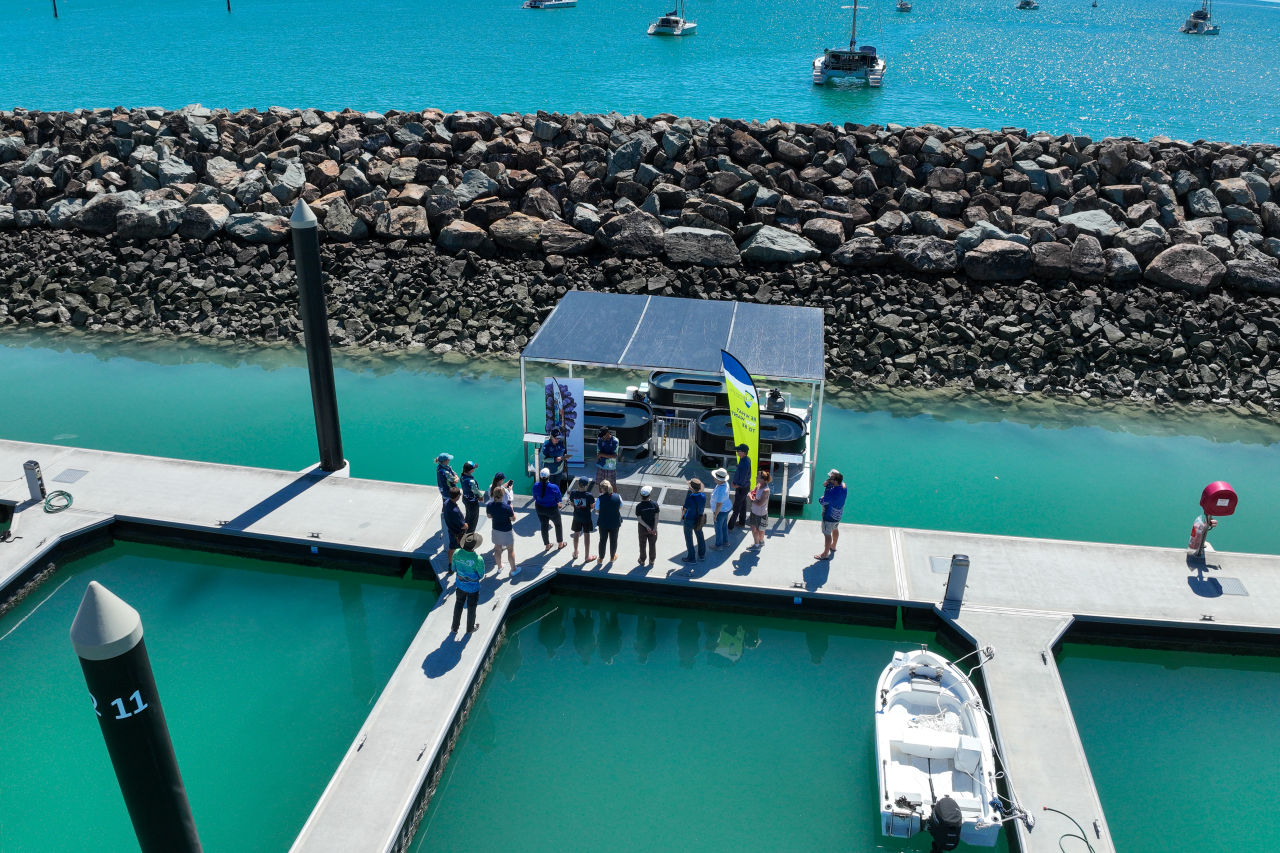
Aerial view of seagrass nursery on Airlie Beach pontoon. Credit: Reef Catchments.
The Reef Islands Initiative is focussed on establishing a network of climate change refuges to protect critical habitats on the Great Barrier Reef Islands. The initiative has been designed to deliver a collaborative program of on-ground and in-water actions that protect and restore critical island values for wildlife and reef communities in the face of a changing climate. This seagrass restoration project is being delivered through the Whitsundays Reef Islands Initiative, a Great Barrier Reef Foundation program, supported by funding from Lendlease, The Australian Government’s Reef Trust, the Queensland Government and the Fitzgerald Family Foundation.
